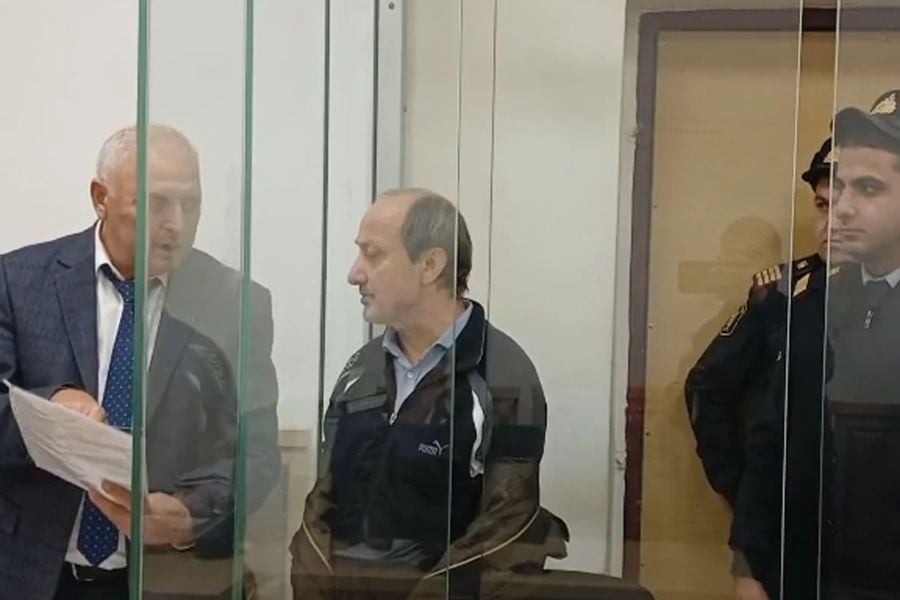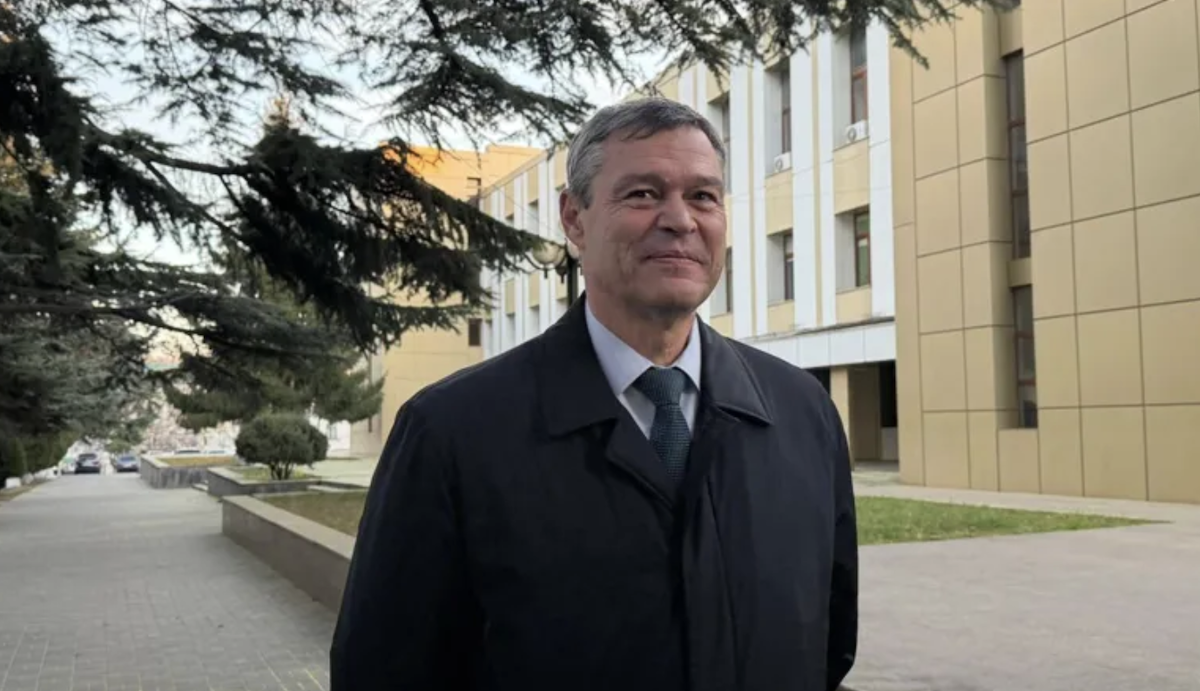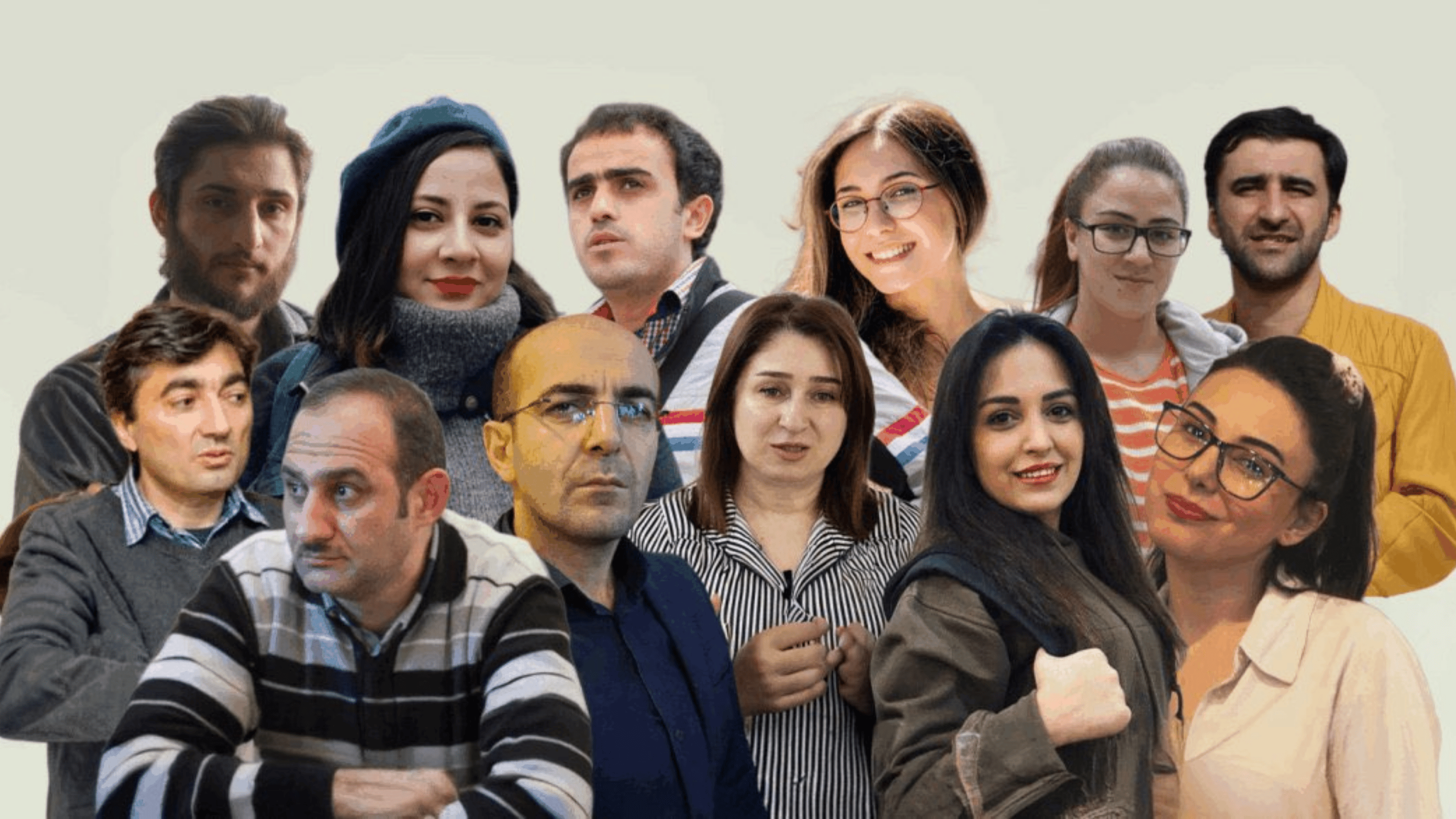The Azerbaijani Trail in Kapan
Edouard Movsysyan is the keeper of the Azerbaijani cemetery in Shgarshik village. The sixty-year-old Kapan resident works to ensure that the railings are not broken, no animals venture in, and the gravestones remain intact.

Situated 320 kilometres from Yerevan, Shgarshik is currently part of the administrative territory of the town of Kapan, capital of the Syunik Province. The outskirts of Kapan were once home to Azerbaijanis, yet following the conflict in Nagorny Karabakh, they left these parts. The current residents have never met those who lived here in the past. Between fifty and sixty houses used to belong to Azerbaijanis, who left Shgarshik in 1988 and 1989. In 1990, Armenian refugees from Sumgait and Baku moved in.
Edouard bought his house in Shgarshik eighteen years ago. His plot of land lies next to the Azerbaijani cemetery.
The gravestones and the cemetery itself remain in good condition. In most parts, the grass has been mown, and only in several inaccessible spots have the bushes and acacia taken over.


‘A grave not far from my house has railings around it, so I began to keep an eye on that plot. I’d cut the grass and collect up any branches, which I would then burn in winter as firewood. One day, we cleared the whole cemetery of all the overgrown trees and bushes, but then they grew even faster and gave us a real headache,’ Edouard recalls.

‘I don’t know who these graves belong to, no one has come to visit them yet. But I’m a Christian, and I would never dream of destroying a grave. If the relatives of those who are buried here decide to come and visit the graves one day, I will not stop them. I’ll offer them coffee, and, if they turn out to be good people, I’ll give them the keys to my house, so they can stay for a couple of days,’ Edouard says. As long as he lives next door, no one will destroy the cemetery, he adds.
Edouard is not a refugee. The sole breadwinner in his family of seven, he drives a taxi in order to make ends meet.
Although Edouard lives in Kapan, he comes here several times a week to water the garden and harvest the crops. When his master is away, Edouard’s dog Chalo looks after the house and its plot of land.

Azerbaijanis started to leave Shgarshik and other villages in the Kapan region in 1988, when the escalating conflict in Nagorny Karabakh was stoking tensions between the two peoples.
Formerly known as Shek, Shgarshik had once had larger village status. In 1990, it became home to forty families of Armenian refugees.
Today it is home to two hundred people, with just ten out of its forty six houses belonging to refugee families. The other residents moved her from different parts of the town of Kapan.
Representative of the Shgarshik quarter of the Kapan community Shayen Babayants is one of Shgarshik’s first residents. He was born and raised in Baku.
‘There were thirty five pupils in my class. Twenty of them were Armenian. We were friends with the Azerbaijanis, in those days no one took any notice of whether you were Armenian or Azerbaijani. These days, my classmates from Azerbaijan live in America and Russia. When I went to Boston in 2001 for a course, I was able to meet up with my old classmate Nasim, we did a lot of reminiscing about the old times,’ Babayants tells us.

Residents had to pay countless visits to various officials with a written petition signed by the refugees, before their families were finally granted ownership of their homes, Babayants explains.
‘In 1993, following a government decision, these houses, together with their adjoining plots of land, were given to the refugees who were living in them,’ Babayants recalls.
Another local resident, 51-year-old Artur Abramyan, was forced to leave his comfortable three-room flat in Baku. In 1989, he moved here, settling in a bungalow with crumbling walls that lacked basic amenities.

The decrepit building is falling into even worse disrepair. The room which used to be the bedroom has long been uninhabitable.

‘I never dreamed that one day, we would have to live in conditions like these. At first, there was no bathroom or toilet in the house, so one could hardly consider it a comfortable home. The state gives us no help; everyone has to fend for themselves. A few years ago, we got a bit of money from Oxfam, so we were able to build a small extension, buy several head of cattle and some fruit trees, and get our lives back on track,’ Raisa Abramyan recalls.
As a sixteen-year-old, she was forced to flee the Azerbaijani city of Sumgait with her family to move to Armenia. Raisa had dreamed of becoming a graphic designer.
The British charity Oxfam has carried out a number of humanitarian projects in the village. Thanks to one of them, in 1996 Shgarshik finally gained access to running water.
Unemployment remains a huge problem here, and in the entire Kapan region.
‘We get up at five in the morning to go to the woods and pick herbs, blackberries and cornelian cherries, so as to get to town by eight and sell them. We barely make ends meet, and we never really manage to put anything by for winter,’ Artur Abramyan explains.
The Azerbaijanis who used to live here were mainly cattle breeders.
‘We tried to breed cattle, but they all died after being bitten by snakes. There are a lot of snakes here,’ the head of the family adds. He has been unable to find a job that would enable him to keep his family properly.
‘I worked as a watchman in several places, but the money I earned was not enough to cover even our most basic needs,’ Abramyan recalls.
Unlike Artur Abramyan, Shayen Babayants, a financial expert, has been able successfully to develop his career in Armenia. After gaining degrees in medicine and law, he is now security manager for the Kapan municipal authority.
Babayants heads the Syunik Province Karate Federation, and, since 2004, the Syunik Health Foundation, also.
According to Shayen Babayants, when his family moved to the area, there were a lot of Azerbaijani graves here.
‘During the war, dozens of gravestones in Artsakh were destroyed in the bombings. So all the residents in our village got together and decided to try to preserve around ten graves that were still intact – although we knew that the Armenian graves in Azerbaijan had been destroyed.’
In the centre of Shgarshik, a monument to Azerbaijani soldiers who fell in the Second World War, still stands. Engraved in Russian, it bears the names of some thirty Azerbaijanis from the village, who died in the war.

In the entire region, there are just three monuments honouring Azerbaijanis who died in the Second World War, says Aram Davtyan, Head of the Syunik Province Bureau for the Preservation of the Historical Environment and Museum-Preserves of History and Culture. The monuments are situated in Shgarshik, Arevis village (Sisian region) and Legvaz village (Megri region).


















